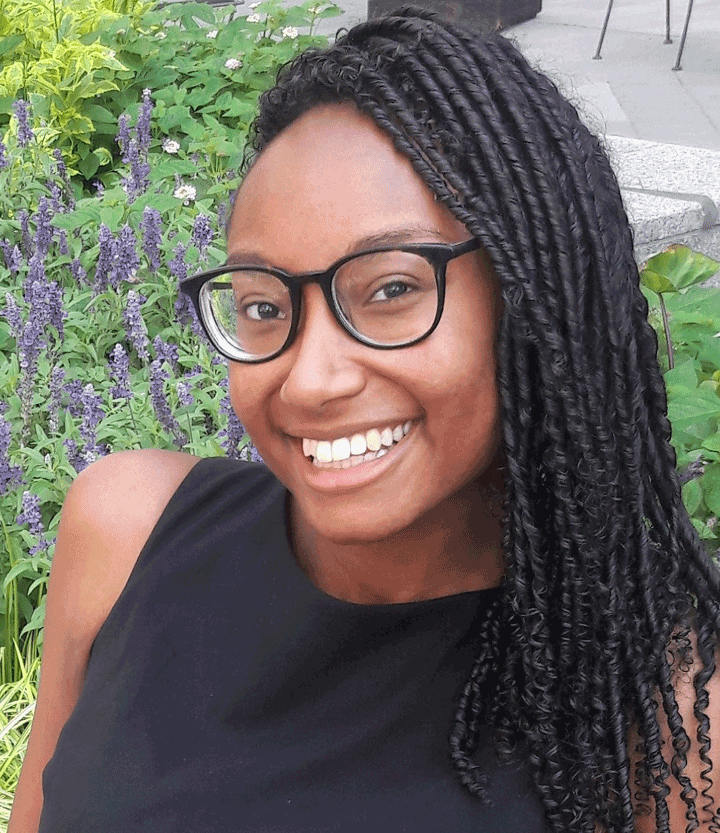JUMP Into STEM Interns Pursue Passions Through Impactful Building Science
JUMP into STEM provides an invaluable opportunity to explore building sciences and win an internship at a national laboratory.

For three inspiring young building science professionals, coursework completed in their college classroom landed them a 10-week internship at the National Renewable Energy Laboratory (NREL).
2020 JUMP into STEM Final Event competition winners Megan Bush, Zoe Landers, and Vedyun Mishra are supporting impactful research, exploring their passions, and contributing new perspectives to the NREL Building Technologies and Science Center.
JUMP into STEM is a nationwide competition open to U.S. undergraduate and graduate students across a variety of majors, focusing on creative ideation and diversity in the building science field. Many professors have also partnered with JUMP into STEM to incorporate the challenges into graded coursework. The competition offers a unique, hands-on learning experience and seeks to inspire the next generation of building scientists through challenges that impact the current state of the industry.
Exploring Opportunities in Building Science
All three of this summer's JUMP into STEM interns agree that the open challenge format of JUMP into STEM gave them the freedom to explore how their passions and skills have an important place in the buildings research space.
Landers, who is currently pursuing dual majors in civil engineering and physics at Clark Atlanta University, participated in JUMP into STEM as a requirement for her engineering graphics course. The competition allowed her to choose a building science challenge that appealed to her desire to fight for housing equity through research and gave her insight on a career path.
For Bush, a recent architectural engineering graduate of North Carolina Agricultural and Technical State University, JUMP into STEM reinforced her interests in both the functionality and aesthetics of buildings and the emerging technologies that facilitate them.
"This competition opened my eyes to more career opportunities in the industry," Bush said. "Beautiful buildings can be healthy for us and our environments."
As an experienced architect who recently earned a graduate degree from Syracuse, Mishra appreciated that JUMP into STEM demonstrated how different types of professionals contribute to the building science industry.
"This competition is unique in the fact that it is really multidisciplinary," Mishra said. "My teammate was a structural engineer, so I got to understand his background and what he brings to the table. Sometimes, architects work in a silo where we just focus on design and are not as focused on the energy efficiency factors, so working across the industry in a competition like this really opens up your perspective in ways you wouldn't have otherwise in just school."
An Opportunity To Make a Real-World Impact
Each of the interns are spending their 10-week internship supporting three high-profile projects:

Zoe Landers is supporting Navigating the New Arctic: Ice Rich Permafrost Systems in partnership with NREL's Cold Climate Housing Research Center (CCHRC), which studies how homes and buildings can adapt to mitigate thawing ice-rich permafrost systems. Landers is studying building science to be able to advance affordable housing in low-income areas in the South and chose this specific project to broaden her horizons. Working with thawing land is new to the Alabama native, but she finds connections when it comes to the issue of homelessness. In fact, the community that this project serves is operating at a homelessness rate of 100% due to a housing shortage and the high cost of building on permafrost.
"For me, it's always about the equity side of things," Landers said. "Everyone should have access to housing and transportation―no matter your economic status or income level. I'm seeing how CCHRC and NREL are fighting to give these communities safe and efficient housing solutions, and that inspires me to work in this field."

Megan Bush is working with the URBANopt team. The URBANopt simulation platform provides insight into thermal and electrical loads in buildings, neighborhoods, campuses, and districts. More specifically, Bush is supporting a client project involving about 15 single-family houses in Vermont. Inspired by recent events, the work investigates resiliency, comfort, and what happens if the area loses power.
"URBANopt has a unique opportunity to look into the future―50 or even 100 years out―with a backdrop of climate change," Bush said. "This work is very relevant to how climate change impacts the current reality and will change how we build communities."
Following her NREL internship, Bush will be joining an architectural engineering firm.
"Another exciting element of Megan supporting this project is that she is about to become a practicing professional, and she gets a chance to explore the emerging capabilities of URBANopt now," added her mentor, Ben Polly. "Her insight is helping us to see where the needs are to further URBANopt for industry use."

Vedyun Mishra is working with the Zero Energy Buildings team, exploring energy efficiency strategies for commercial warehouses and distribution centers. This work taps into his passion to understand how design tradeoffs could contribute to higher building efficiency.
"There is such a great opportunity for warehouses and distribution centers to go zero energy, or at least lower CO2 emissions in this growing space," Mishra said. "Architecture has always been more about design, but I felt I had a responsibility to do more than just focus on the looks. We have a huge opportunity to play a role in building efficiency, and I wouldn't be so well equipped without participating in this competition."
This summer, Mishra is helping to identify gaps in current literature and conducting interviews about what is stopping people from transitioning to zero energy. The valuable information he is helping to collect will allow NREL to better understand what industry needs and what national laboratories can provide.
"I'm from New Delhi, one of the most populated cities in the world," Mishra added. "I can't help but think, 'Why aren't people focusing on this?' But, when you start talking about sustainability in relation to occupant health, that's when it starts making sense to the general population, not when it just costs more."
Coming Soon! JUMP Into STEM 2021‒2022
JUMP into STEM is back for its third year, kicking off with new challenges in August. For more information, visit JUMPintoSTEM.org.
